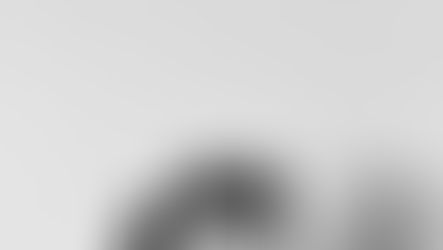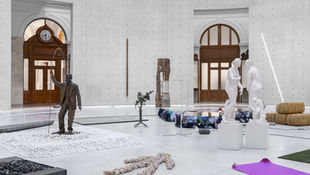
Exploring Jean Luc Godard's Dialogue with Art History
Jean-Luc Godard revolutionised the medium through his innovative use of narrative structure, editing, and visual aesthetics. As a co-founder of the French New Wave, he redefined filmmaking, blending the boundaries between cinema, art, and literature. His approach to storytelling was marked by a radical use of cinematic techniques, one of the most striking being his strategic use of artwork within his films. Godard's cinematic universe often references or incorporates visual art, engaging with it in both thematic and stylistic ways. In many of Godard's films, visual art is not merely a superficial reference or a decorative element; it serves as a key structural component in both the thematic and visual composition of his works. The director's use of artwork can be understood through several lenses: the incorporation of established visual artworks, the use of art as a metaphor for cinema itself, and how visual art connects to the film's exploration of historical, political, and philosophical concerns.

One of the most compelling ways that Godard engages with visual art is by using it as a metaphor for the medium of cinema. In films like Alphaville (1965), Pierrot le Fou (1965), and La Chinoise (1967), Godard borrows from iconic artworks and art movements to interrogate the essence of cinema and the human condition. For instance, in Pierrot le Fou, the character Ferdinand (Jean-Paul Belmondo) engages with an impressionistic view of life, using art as a metaphor for freedom, rebellion, and the search for meaning in a fragmented world. Through his collage of visual references - ranging from Cubism to Pop Art - Godard invites the viewer to reconsider the relationship between film and its broader artistic and philosophical contexts. In Alphaville, Godard creates a dystopian world governed by a rigid, mechanical logic, invoking the influence of Modernism and Constructivism. The sleek, minimalist design of the futuristic city resonates with the aesthetics of early 20th-century art movements like Russian Constructivism. The interplay between these art forms and the narrative demonstrates Godard’s interest in how art, when used thoughtfully, can comment on social and political systems, questioning the role of creativity in an increasingly mechanised world.
Godard frequently references specific artworks from art history, particularly the Western canon, to ground his films within broader intellectual and cultural traditions. His cinematic engagement with the works of artists such as Pablo Picasso, Henri Matisse, and Vincent van Gogh provides viewers with a complex visual vocabulary through which the narrative's thematic concerns can be explored. A notable example of Godard’s engagement with specific artists is found in Le Mepris (Contempt, 1963), where the protagonist, Paul (Michel Piccoli), works as a screenwriter for a film adaptation of The Odyssey. In the background of the film’s production studio, there are several references to famous paintings, such as the work of Giorgio de Chirico. The surreal, dreamlike qualities of these paintings mirror the alienation and existential crisis that Paul experiences concerning his wife Camille (Brigitte Bardot) and the commodification of art in the film industry.
The incorporation of art within this context serves not just as a nod to the intellectual elite but also as a critique of the way film commodifies human emotion, the same way the industry commercialises intellectual ideas. In Alphaville, references to the works of German Expressionism and early cinematic experimentation play a key role in communicating the film’s exploration of technological alienation and the suppression of human creativity. The influence of artists such as Edvard Munch, whose painting The Scream embodies existential dread, is evident in the unsettling tone and visual motifs that permeate the film. By invoking these canonical works, Godard creates a dialogue between art and cinema, allowing viewers to interpret the cinematic experience through an art-historical lens.

Godard’s films often engage with the political and social upheavals of the 1960s and 1970s. As a political filmmaker, Godard used art not just as a cultural reference but as a tool for social critique. The works of revolutionary artists, especially those aligned with radical political movements, are regularly incorporated into his films to question the status quo and to provoke thought on issues like class struggle, political ideology, and cultural imperialism. In La Chinoise, for example, Godard directly engages with Marxist philosophy and revolutionary movements, drawing parallels between art and political activism. The characters in the film discuss the nature of artistic representation and how it relates to revolutionary action. Through these discussions, Godard challenges the very notion of art as an apolitical entity, emphasising instead the role that art plays in shaping consciousness and encouraging political engagement. The film’s deliberate use of revolutionary art, posters, and political propaganda speaks to Godard’s belief that art cannot remain neutral in the face of oppressive regimes.
Similarly, in Weekend (1967), Godard critiques the bourgeoisie and their role in the perpetuation of capitalist structures. The film’s apocalyptic vision of social breakdown features several references to classical art, including references to the works of the Italian Renaissance. Through these artworks, Godard links the decay of society with the degradation of cultural values. The juxtaposition of classical art with images of violence and chaos conveys the idea that contemporary society has lost its connection to higher ideals, and thus, the possibility of redemption seems unlikely.
Beyond thematic explorations, Godard also uses art to shape the formal qualities of his films. His highly distinctive editing style, often characterised by jump cuts, disorienting transitions, and fractured narratives, mirrors the fragmented and often jarring nature of modern art. These techniques do not simply break with traditional cinematic form; they also engage directly with the notion of art as an active force that challenges conventional perception and expectations. In Vivre sa vie (1962), Godard breaks from the traditional linear structure of classical narrative cinema, using still frames, tableaux, and close-ups to evoke the stillness and compositional precision found in classical painting. The director’s use of framing, particularly in the film's famous shot of Nana (Anna Karina) sitting in a café, evokes the still life compositions of 17th-century Dutch painters like Johannes Vermeer. The stillness of the shot and its careful composition are in stark contrast to the movement and action typically expected in film. By adopting this strategy, Godard invites the viewer to contemplate the moment, much like one would contemplate a painting, encouraging a deeper reflection on the character’s inner life and the nature of cinematic time itself.
Jean-Luc Godard’s relationship with visual art is multifaceted and dynamic, stretching far beyond mere aesthetic references or decorative motifs. Through his deliberate incorporation specific works of visual art and revolutionary art movements, Godard creates a layered cinematic experience that encourages intellectual engagement and offers a critique of both the art world and society. His films challenge the boundaries between cinema and visual art, using artwork not only as a thematic tool but also as a formal device that shapes the way the viewer experiences time, space, and narrative. In doing so, Godard's use of art functions as a mirror of the world around us - fragmented, political, and constantly shifting—inviting viewers to reflect on the role of art and cinema in understanding and transforming that world. As such, Godard remains a towering figure in the intersection of art and film, a director whose work invites endless analysis and reinterpretation.





